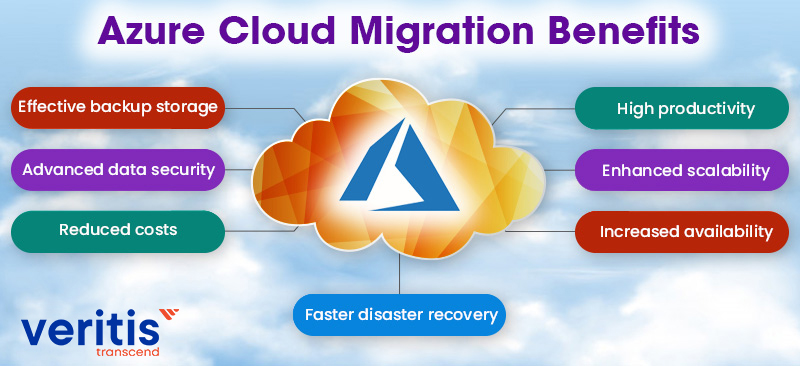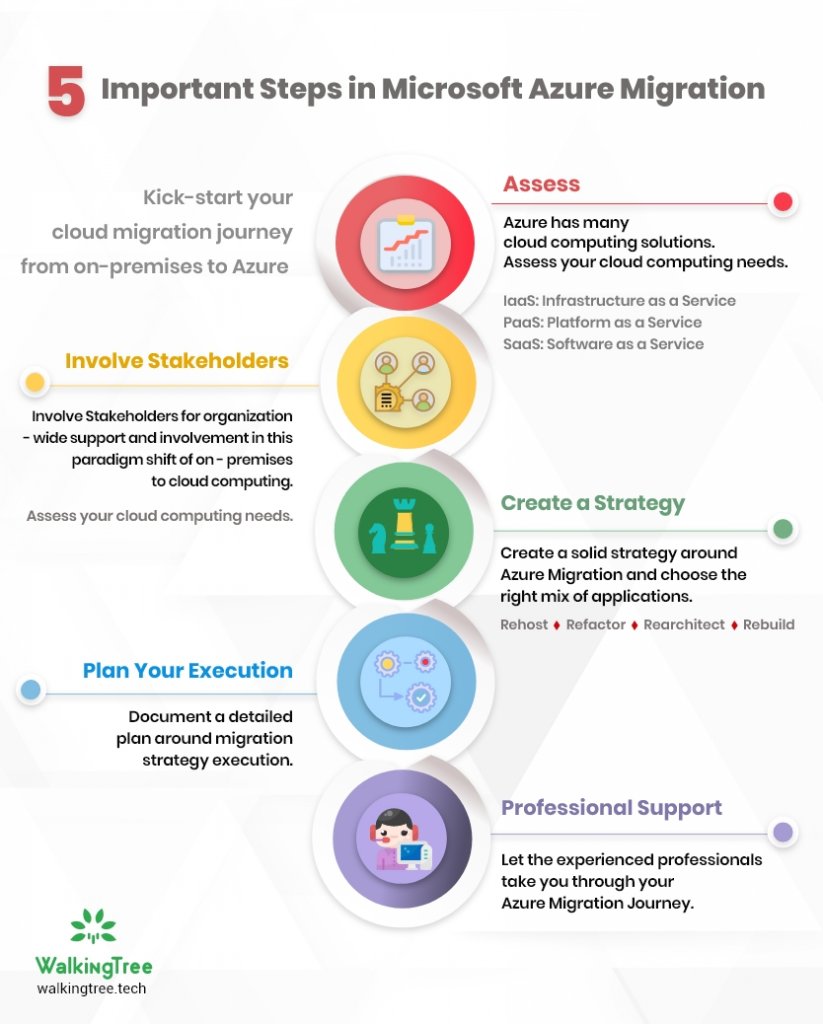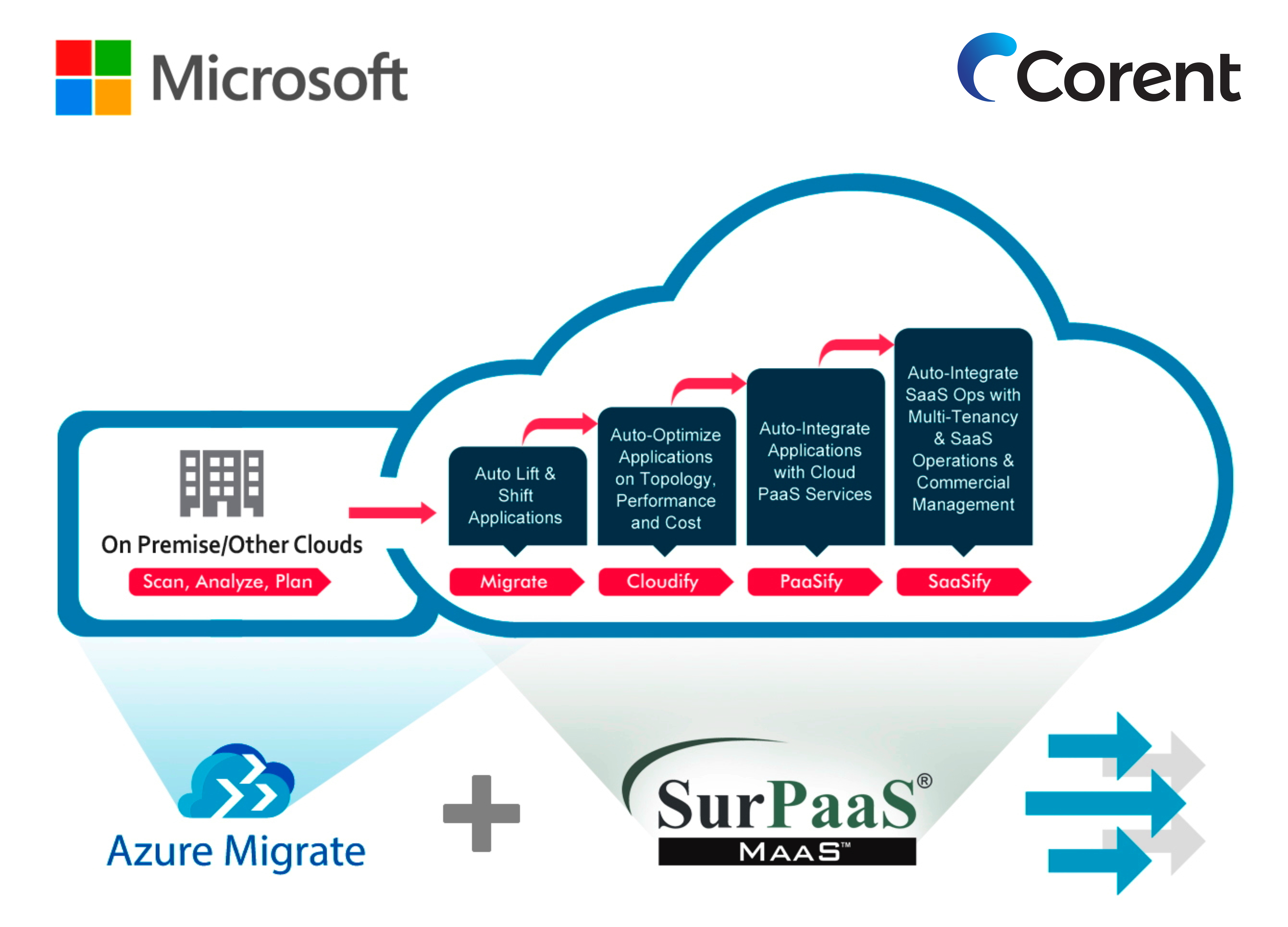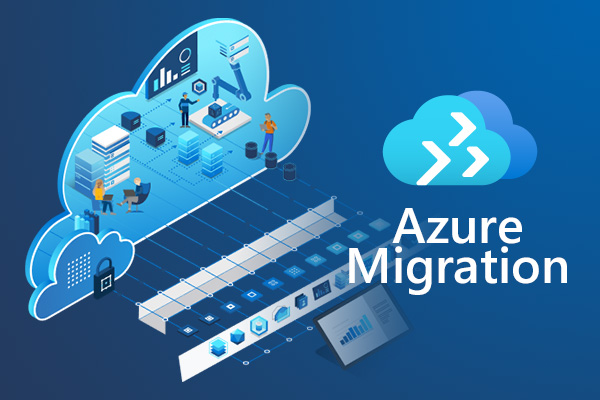What is Azure Migration?
Azure migration refers to the process of transferring applications, data, and infrastructure from on-premises or other cloud platforms to Microsoft’s Azure cloud. This transition offers numerous benefits, including increased scalability, flexibility, and cost savings. Organizations can seamlessly scale their resources up or down as needed, pay only for the services they consume, and leverage Azure’s global data centers to ensure high availability and redundancy.
Understanding Your Current IT Infrastructure
Before embarking on an Azure migration, it is crucial to assess and understand your existing IT infrastructure. This evaluation includes several key aspects, such as application dependencies, data security, and network configurations. By thoroughly analyzing your current setup, you can identify potential issues and plan for a smooth migration process.
Application dependencies are a critical factor to consider during this evaluation. Understanding how your applications interact with each other and with your data will help you determine the optimal migration strategy. For instance, you may need to rearchitect or refactor certain applications to ensure compatibility with Azure services. Additionally, assessing data security measures, such as access controls and encryption, will help maintain data privacy and regulatory compliance throughout the migration.
Network configurations also play a significant role in a successful Azure migration. Evaluating your current network topology, including on-premises and cloud-based components, will help you design a robust and secure network architecture in Azure. This may involve implementing virtual private networks (VPNs), ExpressRoute connections, or a hybrid setup that combines on-premises and cloud resources.
Assessing Azure Migration Tools and Services
Microsoft’s Azure Migration Program (AMP) offers a suite of tools designed to simplify and streamline the Azure migration process. These tools help minimize downtime, reduce risks, and ensure a smooth transition to the cloud. Key Azure migration tools and services include:
- Azure Migrate: A central hub for discovering, assessing, and migrating workloads to Azure. Azure Migrate provides recommendations on migration strategies, offers visibility into migration readiness, and estimates migration costs.
- Azure Site Recovery: A disaster recovery solution that helps organizations replicate workloads running on physical and virtual machines from on-premises to Azure. Azure Site Recovery ensures business continuity by orchestrating failover and failback processes with minimal disruption.
- Azure Database Migration Service: A fully managed service that enables seamless migrations of databases from on-premises or other cloud platforms to Azure. Azure Database Migration Service supports homogeneous and heterogeneous migrations for various database engines, such as SQL Server, MySQL, and PostgreSQL.
By leveraging these tools and services, organizations can efficiently plan and execute their Azure migrations, taking advantage of the cloud’s scalability, flexibility, and cost savings.
Planning and Preparing for a Successful Azure Migration
Planning and preparation are crucial to ensuring a smooth Azure migration. By following these key steps and best practices, organizations can minimize risks, reduce downtime, and maximize the benefits of their cloud transition:
- Set clear objectives: Define the goals of your Azure migration, such as improving scalability, reducing costs, or enhancing disaster recovery capabilities. Establishing clear objectives will help guide your migration strategy and decision-making process.
- Establish a migration timeline: Create a realistic timeline for your Azure migration, taking into account the complexity of your IT infrastructure, available resources, and potential dependencies. Break down the migration into manageable phases to ensure a smooth and organized transition.
- Allocate resources: Dedicate a team of skilled professionals to manage and oversee the Azure migration. Ensure they have the necessary training, tools, and support to execute the migration successfully. If required, consider partnering with a Microsoft Azure Expert Managed Service Provider (MSP) to augment your team’s capabilities.
- Assess migration readiness: Use Azure Migrate to evaluate your current IT infrastructure’s compatibility with Azure services. Identify potential issues, such as application dependencies or data security concerns, and develop a plan to address them before migrating.
- Test and validate: Before executing the migration, perform thorough testing and validation to ensure a seamless transition. This may include setting up a test environment in Azure, running pilot migrations, and validating application functionality and data integrity.
By carefully planning and preparing for your Azure migration, you can ensure a successful transition to the cloud and unlock the full potential of Microsoft Azure.
How to Execute an Azure Migration: Step-by-Step Guide
Follow this detailed, step-by-step guide to execute a seamless Azure migration, from initial assessment to post-migration optimization:
- Initial assessment: Evaluate your current IT infrastructure using Azure Migrate. Identify application dependencies, data security requirements, and network configurations. Address any potential issues or concerns before proceeding with the migration.
- Planning and design: Based on your initial assessment, design a migration plan that aligns with your objectives and timeline. Choose the appropriate Azure services and tools for your workloads and applications. Ensure your design addresses data security, compliance, and networking requirements.
- Resource provisioning: Provision the necessary Azure resources, such as virtual machines, storage accounts, and databases. Utilize Azure Reserved Instances or Azure Spot Instances to optimize costs. Configure networking components, such as virtual networks, subnets, and firewalls, to ensure secure connectivity.
- Application migration: Migrate applications using tools like Azure Site Recovery or Azure App Service Migration Assistant. Test applications in the target Azure environment to ensure functionality and data integrity. Address any compatibility issues or bugs before proceeding to the next step.
- Data migration: Migrate data using tools like Azure Data Box or Azure Database Migration Service. Validate data integrity post-migration and ensure data security by configuring access controls and encryption.
- Testing and validation: Perform thorough testing and validation of the migrated applications and data. Ensure that all functionalities are working as expected and that data integrity is maintained. Address any issues or discrepancies before finalizing the migration.
- Cutover and go-live: Once testing is complete, schedule a cutover to transition from the source environment to the target Azure environment. Monitor the system closely during this period to ensure a smooth transition. After the cutover, perform final validation and address any remaining issues.
- Post-migration optimization: Continuously monitor and optimize your Azure environment for performance and cost. Implement Azure Cost Management to track and manage spending. Regularly patch and update systems, and configure firewalls and multi-factor authentication to maintain security.
By following this step-by-step guide, you can ensure a successful Azure migration and unlock the full potential of the cloud for your organization.
Optimizing Costs and Performance in Azure
Organizations can significantly reduce costs and improve performance in their Azure environments by implementing best practices and utilizing available tools and features. Here are some strategies for optimizing costs and performance in Azure:
- Reserved Instances: Azure Reserved Instances (RIs) allow organizations to save up to 72% on virtual machine costs by committing to a one- or three-year term. RIs are available for various Azure services, including virtual machines, SQL databases, and Azure Cosmos DB.
- Scaling resources: Azure offers dynamic scaling, enabling organizations to automatically scale resources up or down based on demand. By scaling resources appropriately, organizations can maintain optimal performance while minimizing costs.
- Azure Cost Management: Azure Cost Management is a suite of tools that helps organizations monitor, optimize, and control their Azure spending. By using Azure Cost Management, organizations can gain insights into their usage patterns, identify cost-saving opportunities, and set budgets and alerts.
- Spot Instances: Azure Spot Instances enable organizations to use spare Azure compute capacity at significant cost savings, up to 90% off regular prices. Spot Instances are ideal for workloads that can tolerate interruptions, such as background processing, testing, and development.
- Continuous monitoring and adjustment: Regularly monitoring Azure performance and costs is essential for optimization. Utilize Azure Monitor, Azure Advisor, and Azure Log Analytics to gain insights into your environment and make data-driven decisions for optimization.
By implementing these strategies, organizations can optimize costs and performance in their Azure environments, ensuring they maximize the value of their cloud investment.
Security Best Practices for Azure Environments
Security is a critical aspect of any Azure migration. Implementing best practices helps organizations maintain a secure environment and protect their applications and data. Here are some essential security best practices for Azure environments:
- Configure firewalls: Utilize Azure Firewall or Network Security Groups (NSGs) to control inbound and outbound network traffic. Configure firewall rules to allow only necessary traffic and regularly review and update these rules to ensure they remain relevant and secure.
- Implement multi-factor authentication (MFA): MFA adds an extra layer of security by requiring users to provide at least two forms of authentication. Implement MFA for all users, especially those with administrative privileges, to minimize the risk of unauthorized access.
- Regularly patch and update systems: Keep all Azure resources, including virtual machines, up to date with the latest security patches and updates. Utilize Azure Update Management to automate patching and update deployment across your environment.
- Monitor and respond to security threats: Azure Security Center provides continuous security monitoring and threat protection for your Azure resources. Use Azure Security Center to detect, analyze, and respond to security threats in real-time.
- Encrypt data: Encrypt data at rest and in transit to protect sensitive information. Azure provides various encryption options, such as Azure Disk Encryption, Azure Storage Service Encryption, and Azure Key Vault, to help organizations secure their data.
- Implement Azure Policy: Azure Policy enables organizations to define and enforce consistent policies across their Azure environment. Utilize Azure Policy to ensure compliance with security standards, such as CIS, PCI DSS, and ISO.
By following these security best practices, organizations can maintain a secure Azure environment and protect their applications and data from potential threats.
Overcoming Common Azure Migration Challenges
Azure migration can present several challenges, including data transfer limitations, application compatibility issues, and organizational resistance. Here are some potential solutions and workarounds to help organizations overcome these hurdles:
- Data transfer limitations: Large data transfers to Azure can be time-consuming and expensive. Utilize tools like Azure Data Box or Azure ExpressRoute to accelerate data transfers and minimize costs. Additionally, consider using Azure’s storage tiering options to optimize data storage and access costs.
- Application compatibility issues: Applications that are not designed for cloud environments may encounter compatibility issues when migrating to Azure. Utilize Azure Migrate’s application assessment capabilities to identify potential compatibility issues and implement necessary application modernization or refactoring before migration. Additionally, consider using containers or virtual machines to isolate applications and simplify migration.
- Organizational resistance: Organizational resistance to change can be a significant barrier to successful Azure migration. Address this challenge by communicating the benefits of Azure migration, such as increased scalability, flexibility, and cost savings. Additionally, involve key stakeholders in the migration planning process and provide training and support to ensure a smooth transition.
By addressing these common challenges, organizations can ensure a successful Azure migration and unlock the full potential of the cloud.






